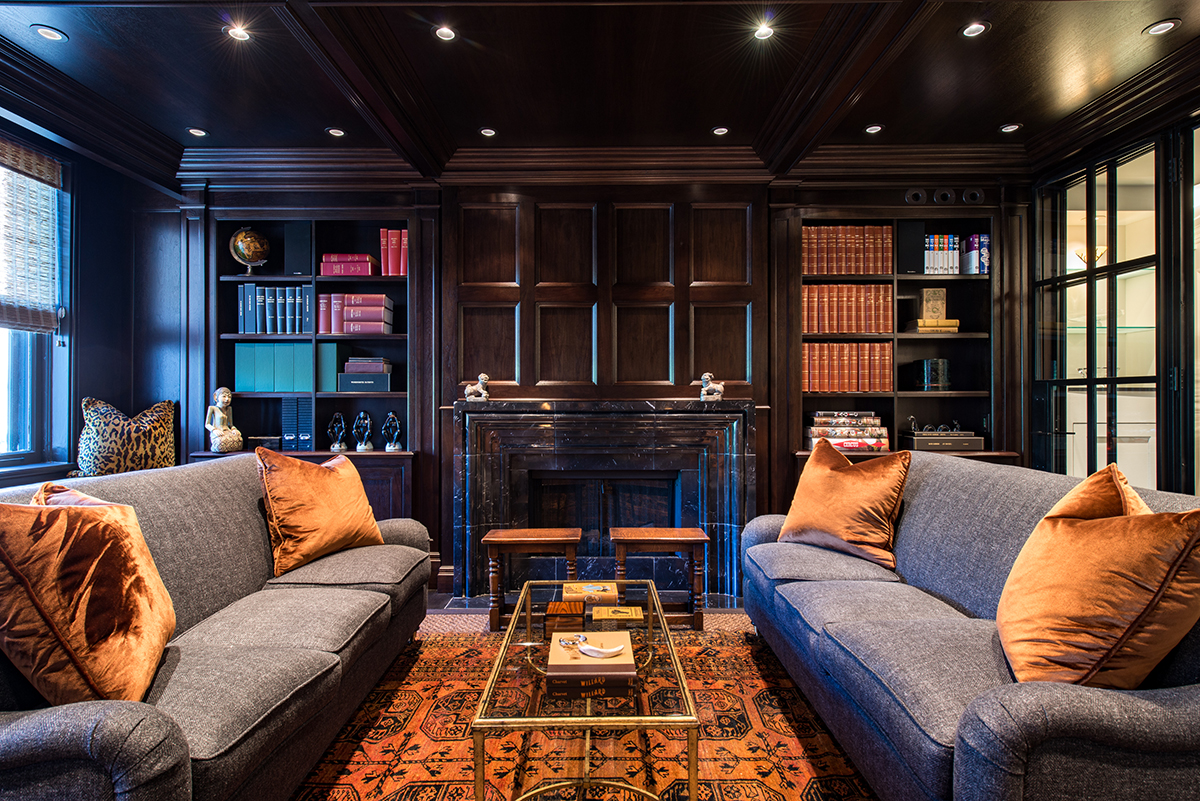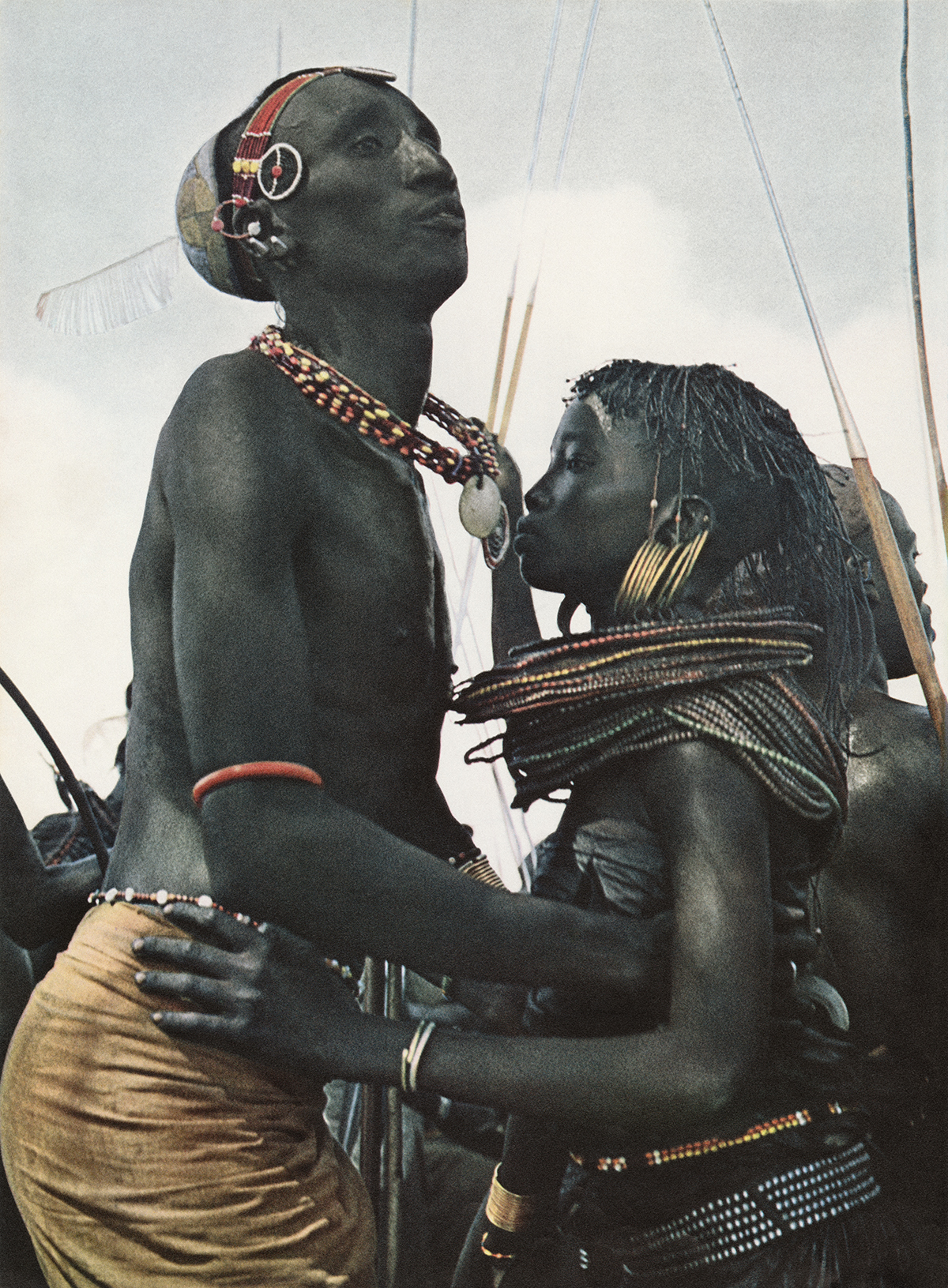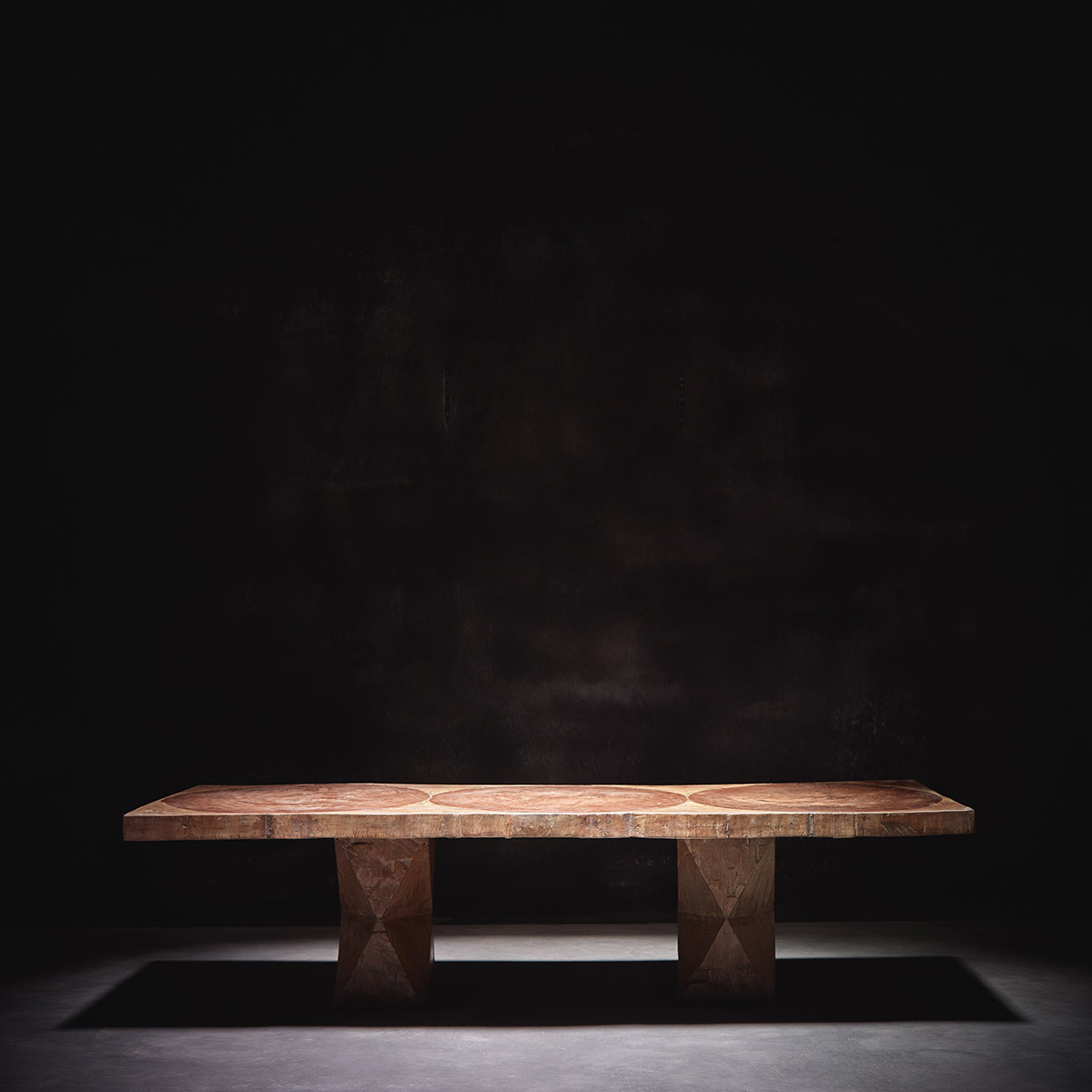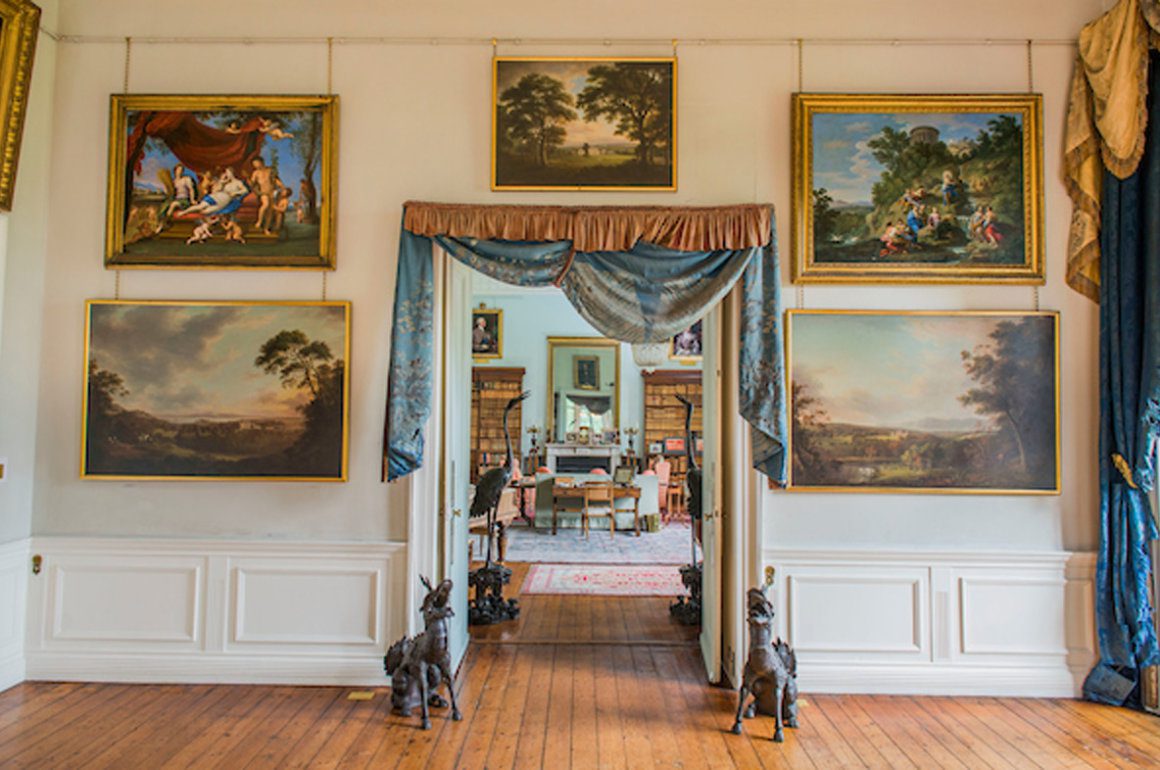
Labassa Woolfe’s Fitzrovia boutique
Fitzrovia’s latest opening, Labassa Woolfe is the brainchild of Johan Labassa, an antiques dealer, and Joe Woolfe, previously Retail Director at Savile Row tailor Spencer Hart, and a celebrity stylist in his own right. The boutique melds their passions to create the ultimate retail experience for men, with a collection of curated antiques, a bespoke tailoring service and a menu of Armagnac and foie gras sourced from Johan’s family farm in the southwest of France. Kitty Harris speaks to the duo about styling the stars, what makes perfect tailoring and the modern gentleman.
LUX: How do antiques and tailoring relate? Or are they mutually exclusive?
Joe Woolfe: I think this is a concept people aren’t used to. They’re not used to a tailoring business with an antiques element; they didn’t understand what it was about. They thought the back of the shop was our private salon. It’s just about letting people know what it’s all about. We try to communicate across our media platforms and in interviews and slowly people are getting it.
LUX: How is your shop different to Savile Row tailors, independent of the fact you sell antiques and fois gras?
Joe Woolfe: I think on the tailoring side I am different. My other business, or my day job if you like, dressing iconic men, and having to sort and source perfect outfits, I always try to find something a bit different. Hence the buttons (all sourced in Paris) and the cufflinks and the extra bits we can do to an outfit. I don’t know if there is another brand on Savile Row that does what we do. I’ve worked with them all, because obviously not all of my clients are going to wear Labassa Woolfe. Benedict Cumberbatch wears Thom Sweeney, he wears Richard James, Kilgour, all kinds of products. Someone came in the other day and said they needed a top hot so I worked with Lock Hatters to get them one. My styling side really works well with this.
LUX: Joe, you mentioned being Benedict Cumberbatch’s stylist? Is there more pressure working with a celebrity?
JW: I think all clients are demanding especially when they are spending a lot of money. I think from my Spencer Hart days there was a mistake in how we ran the business whereby we concentrated far too much on the celebrities and it didn’t go down very well with our other clients. They felt the celebrities were more important than them so now I am aware not to go on and on about celebrities. I like to keep that discreetly on the side and concentrate on the person I’m with.

Joe Wolfe, Benedict Cumberbatch and Johan Labassa
LUX: Why did you decide to set up shop on your own?
JW: I think it was an inevitable step. I work in menswear and I love tailoring and I’ve never been able to get quite what I want out of other brands. I was reluctant to set up a tailoring business. But when me and Johan started talking about what we could do together it really excited me. It was obvious we were going to produce something that was unique and made a lot of sense to me. I couldn’t of done this without Johan and vice versa and it’s worked out really well.
Read next: Hotel Byblos’ owner, Antoine Chevanne on the allure of St. Tropes
LUX: Joe, what makes good tailoring?
JW: Fabric, fabric is really important. I’ve learnt a lot about fabrics because after I left Spencer Hart I went and work with Scabal who are probably one of the best cloth manufacturers in the world, alongside Loro Piana, and they do have an amazing business. They have a £60 million cloth business and 5,000 cloths. It was like going into a kitchen with the best ingredients in the world and being able to use them. Cloth is really important and the people who make the suits. I know a lot about tailoring and the construction of a suit and how that translates onto a person. It’s all about the architecture in a garment and how the garment is built. Anybody who has worn good tailoring, and you then try and put something on them that isn’t well built or manufactured they’re not going to feel good in it. It’s about education, about what people expect. It’s like once you’ve been in an AMG Mercedes you don’t want to go back in a cheap one. Fabric, cut, manufacturing, details. Sometimes less is more. I don’t like people looking like peacocks or like clowns. I like my guys to be really sophisticated, really cool and elegant. Quite often it’s about textures rather than lots of different colours or lots of loud things. We have a few contradictions in the shop, like the black jacket with the coloured Sophie Hallette lace. But there aren’t many people who would wear that.
LUX: How do you think the world of tailoring has evolved in recent years?
JW: Guys know so much more about tailoring than they did. You can walk into Topman now and get a made to measure suit, or into Massimo Dutti. All of the highstreet brands have followed what was going on on Savile Row fifteen years ago. We’re really up against it. There are incredible online tailoring businesses that produce a really good product for a couple of hundred quid. It’s crazy. I know a lot of the cutters on Savile Row who have gone and worked with huge Chinese manufactures and they’ve brought their expertise over to China and over to India. They are producing really good product at a really good price. I’ve felt I’ve had to work harder. Haute couture is always copied onto the highstreet even with womenswear, so it was inevitable that it was going to happen with men’s tailoring as well and it has. But I think the people who are at the forefront of men’s tailoring are always going to be producing better product than highstreet brands.
LUX: How would you describe the modern gentleman?
JW: The modern guy is more educated, they read magazines that inform them on what they need to wear and how they need to wear it. You’ve got iconic men like Oliver Chesire, Jack Guinness, David Gandy who inform every guy on what’s cool and what’s not. GQ is a big supporter. We’ve got men’s fashion week that has a huge visibility so I think most guys know what they’re looking for a lot more than they used to. They have staples in their wardrobe. They often come and know exactly what they want. Some don’t get it quite right. What is a modern guy? A modern guy wants to look cool and sexy…but is that just a modern guy? I think all guys have always wanted that. Even back to the 1850s, everyone says that the One Button Narrow Notch Suit is a new thing, but it’s not. It was around 150 years ago.

Oliver Cheshire and Jack Guinness
LUX: What’s the ultimate men’s accessory?
JW: I think watches are really important which surprises me in this digital age, that guys are so into having something mechanical on their wrist. The amount of money that people spend on watches just blows my mind, it’s phenomenal.
LUX: Johan, your speciality is antiques – is there a particular period you prefer? Which has been your most exciting discovery and where did you find it?
Johan Labassa: Yes, mostly Louis XV, Regency, Directory. But I don’t really have a favourite period. It depends on the furniture and what I find. As for my favourite piece I’ve found…I like them all but I found a great desk from a French family near Paris. It was very hard to get because they were not ready to sell so I had to deal with it long term but at the end of the day I got it and I love it.
Read next: Bill Bensley’s Art Deco palace in Bangkok
 LUX: Do you think there’s an increasing demand in luxury to offer the client more than just the product?
LUX: Do you think there’s an increasing demand in luxury to offer the client more than just the product?
JW: I’m actually bored with retail, because with what I do on the branding and styling side I have to spend a lot of time in luxury stores. There are very few retail experiences that I enjoy. They all have this mono brand feel to the and the staff are quite controlled in what they can and can’t do. We don’t have a huge online presence, you can’t get our candle online or our fragrance or Fois Gras. It’s pointless because unless you come here, see, touch and feel and get looked after by us you’re not going to experience what this brand is about. I think what this brand is about is proper old school retailing experience. All the little things that are bespoke to this business even down to the packaging, the bags and the covers; we’ve worked hard to get unique pieces. We want people to come here and experience us.
LUX: What are the “quintessential elements of French and English style” that are the fundamentals of the brand?
JW: It’s just a bit decadent.
JL: It’s just not normal. We’ve done something that isn’t done, it’s different.
JW: If we serve you a glass of Champagne, A) it’s French, B) We’ll add a little something to it, armagnac, syrup, orange, vanilla and coffee – it’s something Johan has manufactured. C) the foie gras is beautiful, the shoes are beautiful (all custom made in Italy), the art deco chairs are beautiful. It’s all an extension of our home, of who we are.
labassawoolfe.com






























 LUX: Do you think there’s an increasing demand in luxury to offer the client more than just the product?
LUX: Do you think there’s an increasing demand in luxury to offer the client more than just the product?




Recent Comments